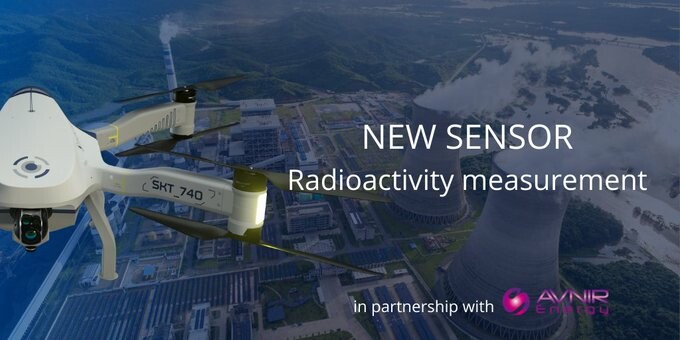When we think about safety and drones, we are usually thinking about preventing people from climbing to dangerous heights or going into mines—when a drone can fly over, around, underneath or into spaces that put humans at risk, it makes that operation significantly safer—but danger could also be unseen threats like radiation. These types of solutions are just beginning to be developed for the drone industry and are another way drones can provide value for businesses, not only saving money but also lives.
Radiation in particular pose a significant threat to safety. It is volatile and harmful to humans and can cause costly damage to equipment. Early detection of leaks is important for protecting employees and assets, but the way to detect these issues is usually to use humans, either on the ground or in crewed aircraft, to scan worksites for these hazards. Drones are ideally suited because they can enable remote detection, thereby removing risks to humans.
To learn more about how these sensors are being used in the energy sector, we spoke with Nicolas Billecocq, COO of Azure Drones, about their recent work with AVNIR Energy to equip their autonomous drone-in-a-box solution, Skeyetech, with an Ionized Zone Inspection Device, or DIZI, to detect radiation at nuclear sites. He explained that this project came about due to a specific need from the nuclear energy sector.
“One of our customers, a leading French nuclear industry player, first raised the need to integrate such a sensor into their Skeyetech systems and connected us with AVNIR Energy,” explained Billecocq. “Skeyetech drone-in-a-box improves the safety and operations at sensitive sites by allowing night and day BVLOS operations, with limited initial training. It was the first approved drone-in-a-box solution in Europe, and it is now field proven in 5 countries with more than 15,000 autonomous flights and 150 users. Because Skeyetech was entirely designed in-house by our R&D center in Bordeaux, we can customize our solution with specific sensors to meet the specific use cases of our customers. For this customer, we were able to develop an integrated solution, while also validating that this solution met the global need for nuclear operators worldwide.”
The DIZI sensor by AVNIR is leading edge technology as well, providing much more data than a standard Geiger counter.
“The DIZI sensor is much more than just a Geiger counter,” explained Jacques Charvin, Director of AVNIR Energy, in a recent press release. “It is a scintillation detector capable of detecting, measuring, and identifying the radioisotopes present. We are delighted to have succeeded in integrating this state-of-the-art sensor on an autonomous drone”.
Similar to the challenges met by adapting most sensors for small UAS, there had to be some alterations to the DIZI sensor to achieve the correct level of integration.
“In order to adapt the DIZI sensor for aerial use, it had to be highly sensitive as well as light weight,” Billecocq told Commercial UAV News. “The main challenge was to find the best compromise between the sensitivity of the scintillation sensor and its miniaturization. Another challenge was then integrating the sensor in our drone to retrieve measurement data in real time.”
By understanding the requirements of the industry before they began developing, they were able to strike a balance that met industry needs and delivered a safer alternative.
“Skeyetech is now able to offer a permanent presence on site and can carry out high frequency missions, several times a day. The Skeyetech with the DIZI sensor can perform regular inspection routines to verify the radioactivity levels throughout a nuclear site, strengthening its safety,” stated Billecocq when asked about how this solution will make these operations safer and create additional value for nuclear sites. “This new technology also helps nuclear operators to monitor and reduce their environmental footprint, which is regularly controlled by supervisory authorities.”
Scenarios like this demonstrate, not only why drones are a cost-effective, safe, and efficient platform for many types of industrial sensors, but also why continuous and autonomous, beyond visual line of sight operations can add many levels of value by increasing the frequency of inspections and keeping people safe.
















Comments